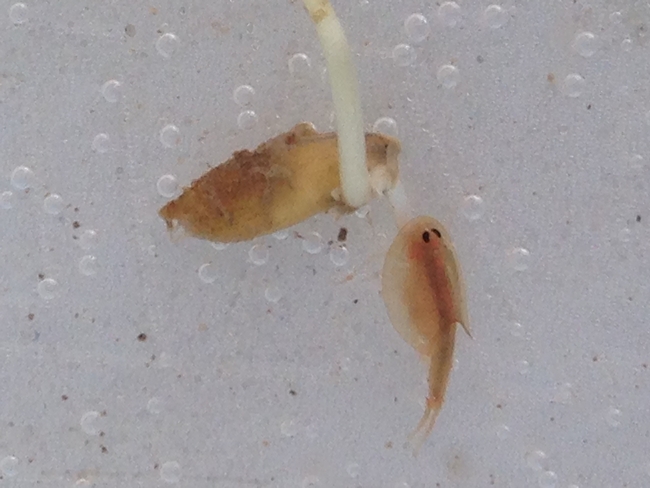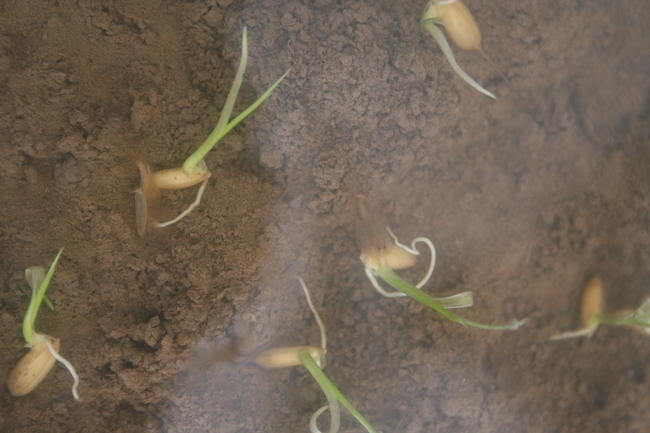Tadpole shrimp (TPS) are starting to pop up in rice fields. A grower asked me when is the period when rice is “safe” from TPS. He is seeing very small shrimp, and seedlings are already past the first leave stage of rice (lsr).
To determine if rice is going to escape TPS injury, two things need to be considered, the rice seedling stage and the size of the TPS. It is difficult to determine the size of TPS, but if you pull one out of the water and its shell is smaller than half the size of a medium grain rice seed, then it won't injure a germinating seed. TPS larger than that will readily feed on germinating seeds and seedlings.
TPS with a shell size about half the size of a rice seed feeding on developing root.
TPS will feed on seedlings until they reach the first leave (when the spike is well developed). TPS don't seem to like feeding on the green tissue. However, they will feed on roots. If the main root is exposed, seedlings are still at risk of TPS injury.
TPS feeding on exposed roots of 1 lsr.
Use this guideline when you scout:
| If TPS shell size is... | And the rice stage is... | Risk of injury is... |
|
Smaller than half the size of a medium grain rice seed |
smaller than 1 lsr | LOW at this point, but may increase as TPS grows |
| Smaller than half the size of a medium grain rice seed | 1 lsr or larger | LOW |
| Larger than half the size of a medium grain rice seed | smaller than 1 lsr | HIGH |
| Larger than half the size of a medium grain rice seed | 1 lsr or larger | LOW, but check the main root. If exposed, it can be consumed by TPS |
One more thing to considering when scouting. If rice escapes injury and TPS are not treated, they will lay eggs that will stay in the soil and hatch next season.
When it comes to TPS management, fields that can be flooded quickly have an advantage over fields that take several days to flood. A quick flood followed by timely seeding will result in seedlings that can reach the 1 lsr before the TPS grow too large. In fields where flooding takes several days, TPS will have a head start and may reach the injuring size before the seedlings reach the 1 lsr.

